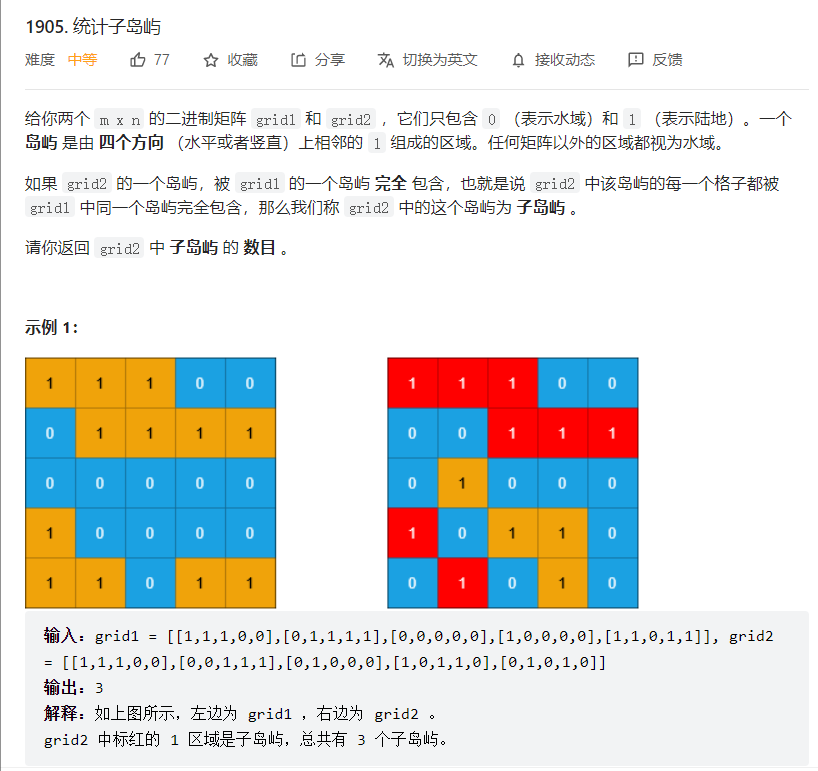题目
统计子岛屿 问题,如图

解法
对表格2,采用递归的方法遍历岛屿,在递归时检查一下表格一对应位置是不是陆地。
代码
1
2
3
4
5
6
7
8
9
10
11
12
13
14
15
16
17
18
19
20
21
22
23
24
25
26
27
28
29
30
|
var countSubIslands = function (grid1, grid2) {
m = grid1.length;
n = grid1[0].length;
count = 0;
const dfs = (row, col) => {
if (row < 0 || row >= m || col < 0 || col >= n || grid2[row][col] != 1) return true;
grid2[row][col] = 2;
let temp = grid1[row][col] === 1;
temp = dfs(row + 1, col) && temp;
temp = dfs(row - 1, col) && temp;
temp = dfs(row, col + 1) && temp;
temp = dfs(row, col - 1) && temp;
return temp;
};
for (let row = 0; row < m; row++) {
for (let col = 0; col < n; col++) {
if (grid2[row][col] === 1 && dfs(row, col)) {
count++;
}
}
}
return count;
};
|
低级错误
问题来了,在递归时需要一个变量保存该点所在岛屿是否是子岛。在上面的代码中,temp这一变量就是这个作用。但是在错误版本中,我把let temp = grid1[row][col] === 1错误的丢掉了let关键字——这使得所有栈中共享一个temp,赋值会改变其他层中temp被覆盖,导致错误。
反思
js的函数中,变量可以不声明而直接赋值,这一点导致我写着写着就以为自己在写python,排查时完全没想到是语法错误。警钟长鸣!
